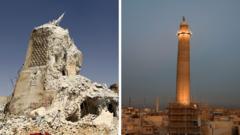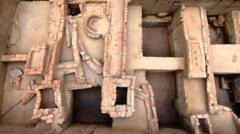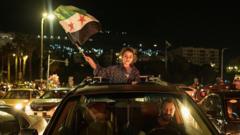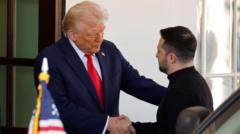The project commenced following the defeat of IS in 2017, which saw the city besieged for years and numerous landmark buildings, such as the leaning al-Hadba minaret and al-Nuri mosque, destroyed. UNESCO's director-general Audrey Azoulay will participate in a reopening ceremony honoring the efforts to restore Mosul's rich heritage, which is emblematic of the city's history of coexistence among various religious communities.
IS's occupation beginning in 2014 saw the imposition of extreme ideology, leading to atrocities against civilians and the targeting of religious minorities. As Mosul Photographer Ali al-Baroodi recalls the devastation from his first visit post-liberation, he described it as a "ghost town" marked by destruction and despair. His reflections capture the deep emotional scars that lingered in the city.
The rebuilding effort, fueled by a $115 million budget sourced from the United Arab Emirates and the European Union, addresses not only the restoration of churches and mosques but also the community that had thrived there. Key figures, like Father Olivier Poquillon, emphasize the importance of rebuilding trust among the diverse groups within Mosul to prevent future conflicts and ensure sustainable peace.
Chief architect Maria Rita Acetoso, who has previously worked on restoration projects in Afghanistan, leads the initiative, noting how cultural restoration can foster job creation and skills development. More than 1,300 local youths have been trained in traditional building arts, creating around 6,000 new jobs.
With the restoration of key sites, including the al-Tahera Church and the al-Hadba minaret, residents are returning to their historical homes, which often hold generations of stories. Mohamed, who recently returned to his family's house built in 1864, expressed his gratitude for witnessing the restoration, highlighting a poignant connection to his heritage despite the tumultuous past.
As Mosul navigates its healing journey, it serves as a symbol of resilience, showcasing the power of community cooperation in overcoming adversity. Ali al-Baroodi likens this revival to "seeing a dead person coming back to life," reflecting the restored spirit of a city once engulfed in despair. The ongoing transformation stands as a testament to hope and unity, vital for the young generations growing in an environment imbued with conflict and instability.
IS's occupation beginning in 2014 saw the imposition of extreme ideology, leading to atrocities against civilians and the targeting of religious minorities. As Mosul Photographer Ali al-Baroodi recalls the devastation from his first visit post-liberation, he described it as a "ghost town" marked by destruction and despair. His reflections capture the deep emotional scars that lingered in the city.
The rebuilding effort, fueled by a $115 million budget sourced from the United Arab Emirates and the European Union, addresses not only the restoration of churches and mosques but also the community that had thrived there. Key figures, like Father Olivier Poquillon, emphasize the importance of rebuilding trust among the diverse groups within Mosul to prevent future conflicts and ensure sustainable peace.
Chief architect Maria Rita Acetoso, who has previously worked on restoration projects in Afghanistan, leads the initiative, noting how cultural restoration can foster job creation and skills development. More than 1,300 local youths have been trained in traditional building arts, creating around 6,000 new jobs.
With the restoration of key sites, including the al-Tahera Church and the al-Hadba minaret, residents are returning to their historical homes, which often hold generations of stories. Mohamed, who recently returned to his family's house built in 1864, expressed his gratitude for witnessing the restoration, highlighting a poignant connection to his heritage despite the tumultuous past.
As Mosul navigates its healing journey, it serves as a symbol of resilience, showcasing the power of community cooperation in overcoming adversity. Ali al-Baroodi likens this revival to "seeing a dead person coming back to life," reflecting the restored spirit of a city once engulfed in despair. The ongoing transformation stands as a testament to hope and unity, vital for the young generations growing in an environment imbued with conflict and instability.





















